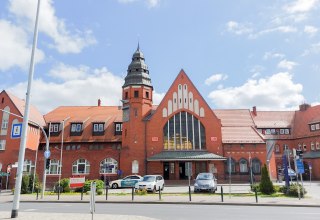The Heilgeist Hospital, first mentioned in 1256, is one of the best preserved former hospitals in northern Germany. The Heilgeist Church from the beginning of the 15th century is one of the oldest buildings in the complex. The two-story longhouses and half-timbered houses once served to house and care for the sick and those in need of nursing.
In 1256, the Heilgeist Monastery was mentioned for the first time. However, at that time it was still located within the fortification belt on Heilgeiststraße, which was named after it. At the beginning of the 14th century, it was moved to the outer edge of the city, to Wasserstraße. Due to this relocation, the Heilgeist Monastery was constantly exposed to siege and destruction. The oldest part of the hospital is the Church of the Holy Spirit. It dates back to the beginning of the 15th century. The small four-bay hall church has a straight choir end and is equipped with a Baroque altar structure from around 1770. Remarkable in the interior of the church is the star and cross ribbed vault. In addition to the west portal leading to the waterway, the church has an east portal and two doors on the east gallery, through which one enters the so-called church aisle, formed by two parallel two-story longhouses, which were added to the church around 1645 and served to accommodate the sick, the needy and the elderly. The corridor is closed on the east by a gate that separates the church corridor from the rest of the hospital. A gallery was built into the church aisle in 1680, which probably provided the model for the portico of the town hall. The Heilgeistkirche was a garrison church before 1945 and is now used as a place of worship for the Heilgeist-Jakobi congregation. The restored church gallery was furnished with apartments. Adjacent to the gallery is the hospital area, on which small half-timbered houses stand. The whole forms a self-contained complex, the reconstruction of which began after the fall of communism and has since been completed.


















